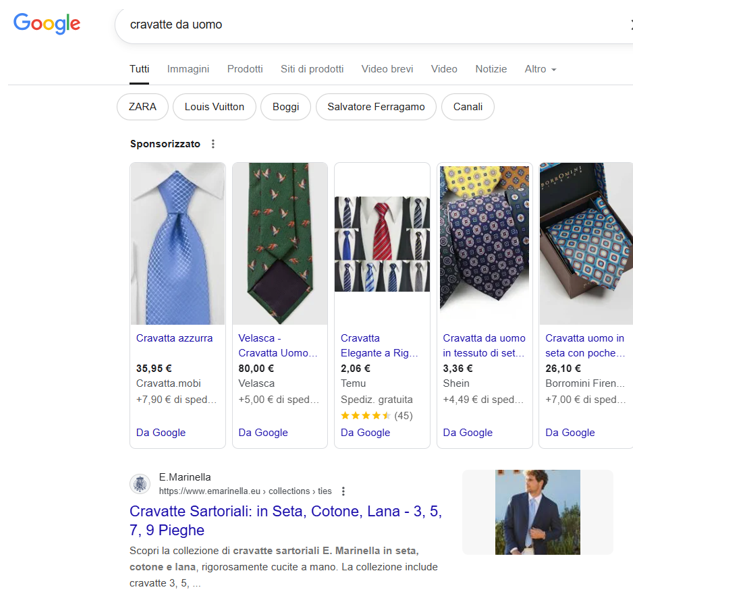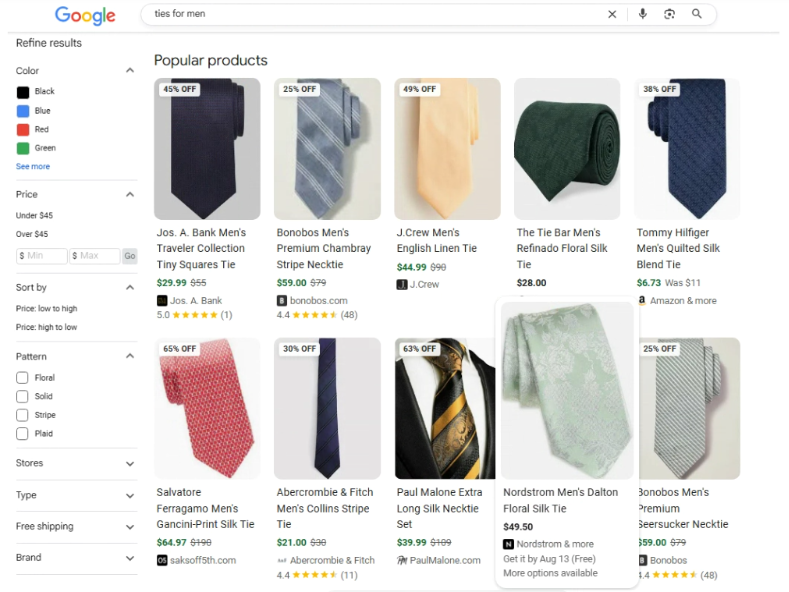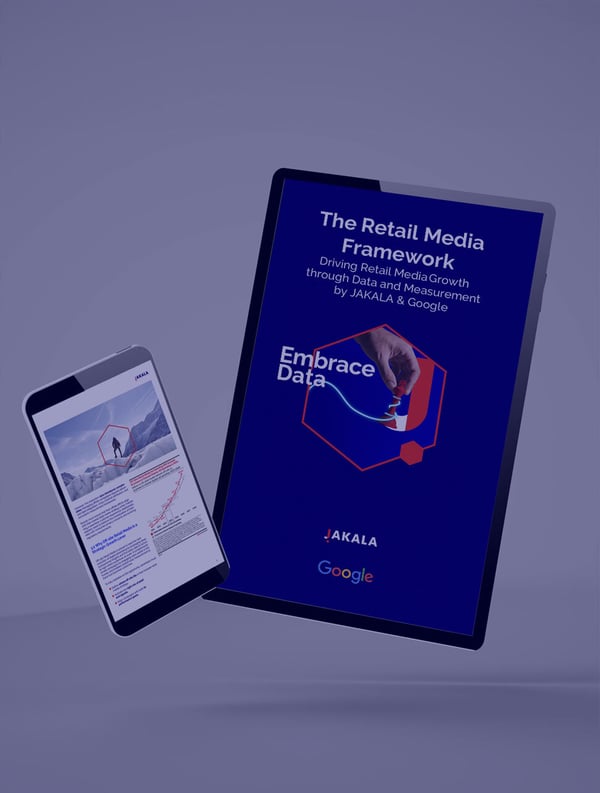What is Google Shopping
Google Shopping is that section of the search engine — easily recognisable thanks to the “Shopping” tab or the boxes with photos, prices, and sellers that often appear above the results — designed to help users quickly compare products, brands, and prices in an instant.
While in Italy it’s not yet entirely familiar, in the US market the shopping component of Google is now an integral part of the customer journey: in addition to being a dedicated tab in the search engine, Google’s main interface changes when a user enters a commercial query, offering the option to filter results by price, colour, material, and then redirecting the user to the seller’s site to complete the purchase.
Here we can see two examples, the first shows a search in Italy for men’s ties: the search results page (SERP) after the paid results, shows a traditional list of website links.
 But if I carry out the same search in the United States, Google’s interface changes completely: I have a sidebar to refine the search and a feed of clickable products that I can browse easily.
But if I carry out the same search in the United States, Google’s interface changes completely: I have a sidebar to refine the search and a feed of clickable products that I can browse easily.

To achieve the same result in Italy, we need to take an extra step: go to Google Shopping (google.com/shopping) and perform the search there. The reason for this difference lies in the lower tendency of Italian users to use comparison tools, preferring direct searches on brand websites or large retailers like Amazon.
However, it’s not unlikely that user behaviour may change, especially with Google’s upcoming announcements about integrating artificial intelligence into the shopping experience. And if optimising products to appear in the “Products” or “Shopping” sections is already crucial, it will become even more so with the advent of new AI-based search engines like ChatGPT or Perplexity.
The future of shopping is conversational
In May 2025, during the Google I/O conference, Google announced updates confirming the future direction: Shopping is becoming increasingly conversational. The new “AI Mode”, integrated into the search engine, allows users to chat with Gemini (Google’s AI model) to seek advice, compare options, refine criteria, and ultimately arrive at a tailored purchase suggestion.
An example? By typing “I want a pair of comfortable shoes for walking all day in Rome in summer”, the AI interprets the context (heat, long walks, city) and suggests coherent, personalised products, supported by the so-called Shopping Graph, which connects over 50 billion product listings in real time.
While AI Mode is already live in the US and UK but not yet in the rest of the world, Google has announced further innovations. The visual experience will become more central with “Virtual Try-On” for clothing: by taking a photo, users can see realistic previews of how a garment would look on them. Or the intelligent agent system, which alerts users when a product’s price drops and can even complete a purchase autonomously via Google Pay if authorised by the user.
The direction is clear: Google Shopping will no longer be just a showcase — it will be a personal assistant.
How to be found on Google Shopping
Optimising the feed on Merchant Center
You must include return and shipping terms and related timelines for all countries, and in general, complete every available attribute for product coding.
Merchant Center also provides a series of alerts and optimisation tips, for example on implementing reviews or improving image quality and quantity. All suggestions are supported by performance data, integrated directly into the platform, allowing you to monitor the results your products are achieving.
Optimising structured data on the website
As with the Merchant Center feed, the same rules apply to structured data: the more information we provide, the more elements the AI will have to recommend our product: title, description, images, URL, price, availability, product variants by size and colour, and usage occasions.
We must start viewing our websites as vast databases of information — the ones who make their data more accessible to AI will win the new game of online visibility.
Reviews: an old-new opportunity
However, this is even more critical for AI-based search engines, which consistently rely on online opinions when recommending a product or service. Platforms like Quora, Reddit, and Trustpilot gain new relevance, and integrating reviews into your own site offers greater control over what users say about you—and the opportunity to address major pain points.
In conclusion
Google Shopping is becoming less of a showcase and more of an intelligent, personalised discovery system. The path forward is clear: start with a well-configured Merchant Center, optimise your site with complete structured data, and keep an eye on the new features arriving in the coming months.
Artificial intelligence is changing the rules of the game and not always in a linear way. But precisely for this reason, companies that can provide high-quality, consistent, and up-to-date content will gain a competitive advantage. The future of e-commerce is not just about clicks but about conversations. And being found at the right time and in the right way can make the difference between a forgotten product and a purchased one.





